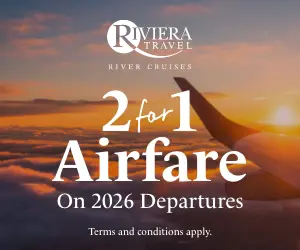In Cuba, Canada is the Guest of Honor
by Steve GillickFrom left to right: Nieves Ricardo, Director Marketing-Cuba Tourist Board; Karen Puebla, Executive Assistant-Cuba Tourist Board; Javier Domokos Ruiz, Consul General of Cuba, Toronto, Canada; Eloy Govea, Director-Cuba Tourist Board; Lisbet Soberat, Cuba Tourist Board
The message delivered at the Cuba Tourist Board’s media lunch in Toronto on April 26th was that Canada and Canadians are very important to Cuba Tourism and that Canadian travelers should not be swayed by media reports that relate to the influx of American visitors and no room availability.
Eloy Govea, the Director, with Javier Ruiz, the Toronto Consul General of Cuba in attendance, claimed that the biggest understatement is that Canada is the number one market to Cuba. He noted that the number of Canadians vacationing in Cuba, which amounted to 1.3 million in 2015, is so far in 2016, more than 16 other nationalities combined. He remarked that Canada and Cuba have enjoyed uninterrupted diplomatic relations since 1945 and in a clear, unambiguous statement, he re-affirmed that Cuba remains loyal to its traditional friend, Canada.
Govea said that the media coverage of the new shift in American attitudes toward Cuba needs to be put into context. Canada accounted for 41% of all arrivals in 2016 but Havana accounts for only 1%. On the other hand, 70% of Americans arrive in Havana, so in reality the Cuban capital is the only destination that is really busy—for Americans. In other words, outside of Havana, Canadians and Americans are not competing for the same rooms.
Govea also suggested that a fair share of American visitors at this stage are American-born children of Cubans, who account for VFR (visiting friends and relatives) travel, as opposed to pure leisure travel. So again, there is no overt competition for rooms and tourism resources.
The Director listed a number of Cuban destinations popular with Canadians including Varadero, Villa Clara, Cayo Coco, Holguin and Cayo Largo, which account for 94% of Canadians arrivals and where only a handful of Americans, if any, have ventured.
It was also noted that while Miami is the major gateway for direct flights to Cuba from the U.S, Canada has 30 gateways that offer direct flights to Cuban airports, and the desire to visit the island is expanding as direct flights from Western Canada are bringing new Canadian interest to visiting the country.
When asked about the long range project to build 108,000 new hotel rooms by 2030, Govea noted that these rooms will benefit Canadians, as will the new government plans to improve infrastructure that includes airports, roads, cruise terminals, marinas, attractions, golf courses and more.
With culinary travel in mind, Govea noted that the quality of food in Cuba is a number one priority and there is a major initiative to raise the standards of the food industry to cater to more varied and sophisticated tastes.
Nieves Ricardo, the Marketing Director reassured the gathering that contrary to a recent spate of press scare tactics, Cuba is definitely not running out of beer, with many local breweries providing the cold brew when mainstream supplies are not readily available.
With all the talk of development, the question of sustainability arose. Govea maintained that the education system instills pride in caring for the environment and that the government is fully committed to ensuring that the country preserve the main reason why people come to the island. This involves more than the 20% of the country that is protected for natural parks, the 11 world heritage sites, the 332 museums and the 257 national monuments.
But more than this, Govea noted that ‘the way we portray Cuba to the world: our heritage and people, are the most essential treasures we hold”. He continued to note the high importance that Cuba places on education and this results in not only knowing, but understanding the value of protecting Cuba’s unspoiled nature and heritage, all of which accrue to visitors through tourism, and all of which appeal to Canadians.
For Cuba, tourism is the ‘locomotive of the economy”. Govea said that tourism ignites and galvanizes all other industries in the country.
Answering other questions, the Director noted that as aspects of the US Embargo may be lifted, Wifi and internet services will steadily improve. He also noted that Cuba’s tourism industry already offers programs in Tourism Management at the University of Havana and other institutions of higher learning and that sommeliers and tour guides and tourism offices have the benefit of excellent training and for staying in touch with modern tourism trends.
While Canadians love the beach and all-inclusives, Cuba is a niche market paradise, something that has not been fully taken advantage of yet. Govea noted that sometimes the best experiences are those that are spontaneous and that travelers should ‘just go and explore’: learn to play the drums, dance, attend museum workshops, take Spanish lessons, learn from locals, visit a fishing village, and more. He told us, as an example that Kite Boarding at Cayo Guillermo is probably the best in the world and that right now, there are some Canadians that check the weather and ocean forecasts and when the situation is ripe, they drop everything and head to Cuba.
Cuba’s love for Canadians will be expressed next week at FITCuba 2016 where the highlight of the International Tourism Fair will be Cuba’s cultural product, but the Guest of Honour, will be Canada.
Mrs. Bardish Shaggar, the Canadian Minister of Small Business and Tourism, will attend the event along with 130 journalists from 25 countries and a contingent of travel industry professionals from around the globe. All will have the opportunity to acknowledge the guest of honour. Canadians should take note that Cuba welcomes them with open arms and that they are still #1 in Cuba’s books.
























